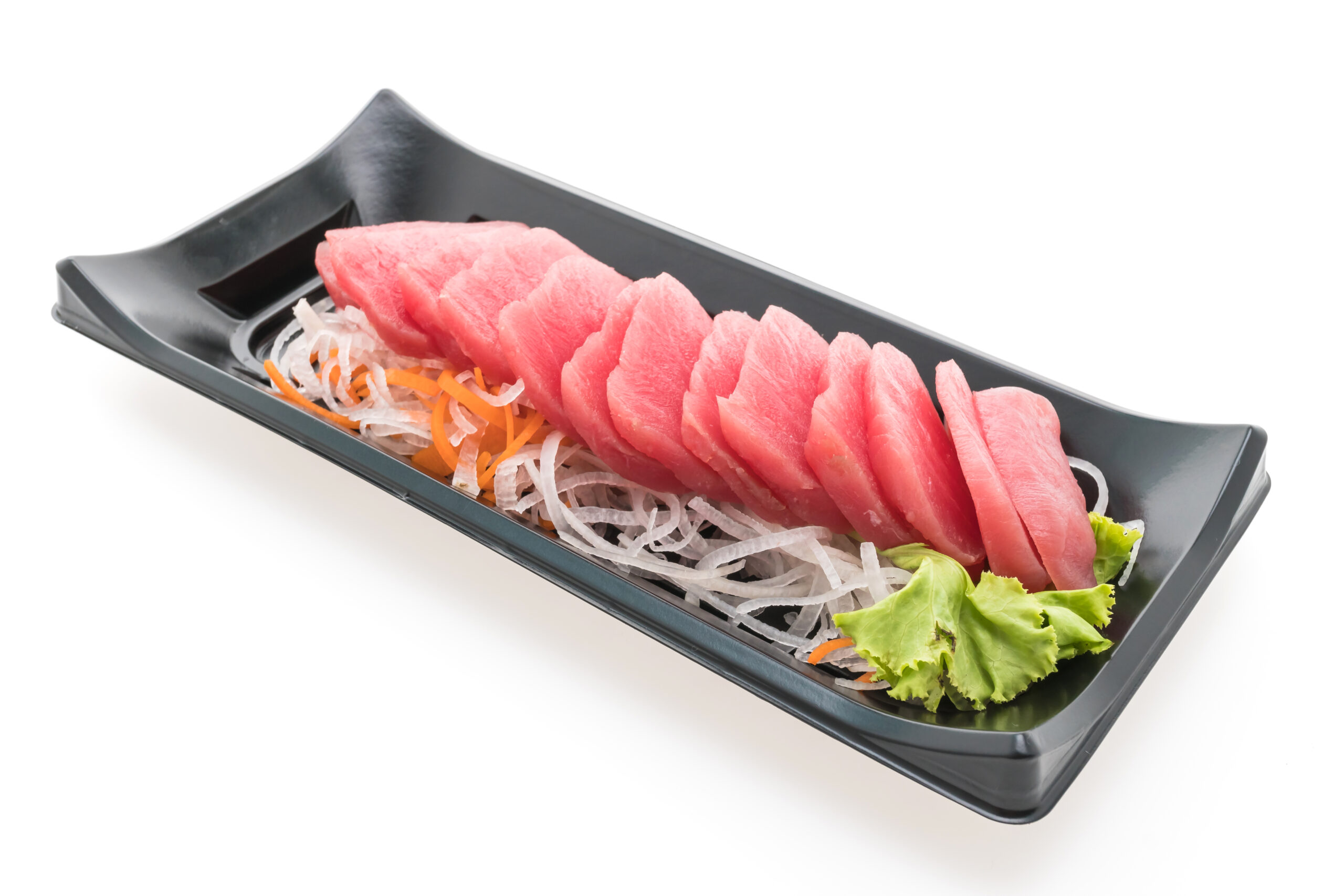The spicy tuna roll is a popular sushi item in Japanese cuisine, especially in Western interpretations of sushi. Known for its balance of rich flavor, spicy kick, and satisfying texture, the spicy tuna roll is a staple at sushi bars and Asian-fusion restaurants alike. But beyond its taste and popularity, many people wonder about the nutritional value of this dish—particularly those who are health-conscious, managing their weight, or interested in understanding their food better.
This article offers an in-depth look into the nutritional profile of a spicy tuna roll, including its calorie content, macronutrients (protein, fats, carbohydrates), vitamins and minerals, health benefits, concerns (like mercury and sodium), and how it fits into different dietary lifestyles.
What Is a Spicy Tuna Roll?
A spicy tuna roll typically includes:
-
Raw tuna (most commonly ahi or yellowfin)
-
Spicy mayonnaise sauce (usually made with mayonnaise and sriracha)
-
Nori (seaweed sheet)
It is often wrapped in seaweed (nori) and sushi rice, then sliced into six to eight bite-sized pieces. Some restaurants may top the roll with additional spicy sauce, tempura flakes, or even slices of fresh tuna.
Nutritional Overview (Standard Serving)
Before diving into specific nutrients, it’s important to define what a standard serving is. A typical spicy tuna roll consists of 6 pieces, which weighs around 190–250 grams depending on the ingredients and preparation method.
Here’s a general nutritional breakdown for one standard spicy tuna roll (6 pieces):
| Nutrient | Amount |
|---|---|
| Calories | 290–350 kcal |
| Protein | 13–24 grams |
| Total Fat | 10–15 grams |
| Saturated Fat | 1.5–3 grams |
| Carbohydrates | 26–35 grams |
| Sugars | 2–5 grams |
| Fiber | 1–2 grams |
| Sodium | 500–900 mg |
| Cholesterol | 20–40 mg |
| Mercury (approx.) | 0.25–0.60 ppm (see below) |
| Omega-3 Fatty Acids | 300–800 mg |
Please note that nutritional values vary based on portion size, type of tuna, amount of spicy mayo used, and any additional toppings.
Macronutrients Breakdown
1. Calories
The calorie content of a spicy tuna roll comes mainly from three sources:
-
Sushi rice: contains sugar and carbohydrates, contributing 140–180 calories
-
Tuna: lean protein, providing 100–120 calories
-
Spicy mayo: high in fat, adds 50–100 calories depending on quantity
If you’re watching your caloric intake, spicy tuna rolls are relatively moderate, but eating multiple rolls or high-fat variations can add up quickly.
2. Protein
Spicy tuna rolls are a good source of lean protein, thanks to the tuna. One roll provides around 13–24 grams of protein, which is beneficial for:
-
Muscle maintenance
-
Satiety (feeling full)
-
Metabolism
Athletes and those on high-protein diets can include spicy tuna rolls as a flavorful protein source.
3. Fat
The fat content primarily comes from:
-
Tuna (contains healthy unsaturated fats, including omega-3s
While unsaturated fats from tuna are beneficial, the saturated fat in mayo can raise LDL cholesterol if consumed in large amounts. You can ask for “light” spicy mayo or request it on the side to reduce fat intake.
4. Carbohydrates
One roll can have 26–35 grams of carbohydrates, primarily starch and simple sugars.
This amount is equivalent to about two slices of white bread, so it’s important to factor this in if you’re on a low-carb or ketogenic diet.
Micronutrients
Spicy tuna rolls offer a range of vitamins and minerals, including:
1. Vitamin B12
Found abundantly in tuna, B12 supports:
-
Red blood cell formation
-
Nervous system health
-
DNA synthesis
2. Selenium
Selenium, a potent antioxidant that shields cells from harm and boosts immunity, is abundant in tuna.
3. Iron
Tuna contains heme iron, which is easily absorbed by the body and supports oxygen transport in blood.
4. Vitamin D
Vitamin D, which is moderately abundant in tuna, supports immunological function and bone health.
5. Iodine
Nori (seaweed) is a great source of iodine, essential for thyroid function.
Health Benefits
Eating spicy tuna rolls in moderation can support various aspects of health:
1. Heart Health
Tuna contains omega-3 fatty acids, which:
-
Reduce triglycerides
-
Lower blood pressure
-
Prevent clotting
-
Support heart rhythm
2. Brain Function
Omega-3s, B vitamins, and iron all contribute to brain performance, focus, and cognitive longevity.
3. Weight Management
Thanks to its high protein content and moderate calorie count, spicy tuna rolls can keep you full longer, reducing the need for additional snacking.
4. Immune Support
Zinc, selenium, and vitamins from the tuna and seaweed boost the immune system and support overall cell repair.
Concerns and Considerations
Despite its benefits, there are some nutritional concerns to keep in mind when consuming spicy tuna rolls regularly.
1. Mercury Content
Tuna, especially ahi and yellowfin, may contain moderate to high levels of mercury.
The FDA and EPA recommend:
-
Adults: no more than 2–3 servings of low-mercury fish per week
-
Pregnant women and children: limit high-mercury fish like tuna
Skipjack tuna has lower mercury levels than yellowfin or bigeye, so if you’re concerned, ask the restaurant what type of tuna is used.
2. Sodium
Spicy mayo, soy sauce, and seasoned sushi rice all contribute to high sodium content—one roll can easily exceed 700–900 mg of sodium, about 30–40% of the daily recommended intake.
High sodium diets are linked to:
-
High blood pressure
-
Kidney strain
-
Cardiovascular disease
To reduce sodium:
-
Use low-sodium soy sauce
-
Limit extra sauces
-
Avoid adding pickled ginger or wasabi in excess
3. Calories from Sauce
While spicy mayo enhances flavor, it’s calorie-dense and high in saturated fat. Some rolls are slathered with sauce, doubling their calorie content. Ask for sauce on the side or skip it altogether if you’re calorie-conscious.
4. Allergens
Key allergens in a spicy tuna roll may include:
-
Fish (tuna)
-
Eggs (in mayonnaise)
-
Soy (in soy sauce and sometimes in the mayo)
-
Sesame (if used as garnish)
-
Gluten (in soy sauce and imitation crab, if included)
How to Make Spicy Tuna Rolls Healthier
If you love spicy tuna rolls but want to make healthier choices, consider these tips:
1. Go Easy on the Sauce
Request light mayo or sauce on the side. Low-fat or yogurt-based substitutes are available at certain sushi establishments.
2. Add Veggies
Choose spicy tuna rolls with added cucumber or avocado for extra fiber, vitamins, and satiety.
3. Try Brown Rice
Some restaurants offer brown rice sushi, which has more fiber and nutrients than white sushi rice.
4. Avoid Fried Toppings
To cut down on extra fats and calories, omit the tempura flakes or crunchy toppings.
5. Watch Portion Size
Stick to 1–2 rolls per meal, and pair with a miso soup or side salad to make a balanced meal.
Spicy Tuna Roll vs. Other Sushi Rolls
| Sushi Roll | Calories | Protein | Fat | Carbs |
|---|---|---|---|---|
| Spicy Tuna Roll | 290–350 | 13–24 g | 10–15 g | 26–35 g |
| California Roll | 250–300 | 8–10 g | 7–12 g | 30–38 g |
| Salmon Avocado Roll | 300–360 | 12–15 g | 15–20 g | 25–30 g |
| Vegetable Roll | 170–220 | 2–4 g | 4–6 g | 30–35 g |
| Tempura Shrimp Roll | 450–500 | 10–14 g | 20–25 g | 35–40 g |
Spicy tuna rolls offer a strong balance between protein and flavor but are higher in fat than simpler rolls due to the spicy mayo.
Frequently Asked Questions (FAQs)
1. Is spicy tuna roll good for weight loss?
Yes, in moderation. With moderate calories and high protein, it can be a satisfying and nutritious option, especially if paired with low-calorie sides and consumed without excessive sauce.
2. Can I eat spicy tuna roll while pregnant?
Pregnant women should limit intake due to mercury in tuna and the raw fish risk. It’s best to consult a doctor and opt for cooked sushi alternatives.
3. Is spicy tuna roll gluten-free?
Not always. Soy sauce typically contains gluten. If you’re gluten-intolerant, ask for gluten-free soy sauce and confirm the roll has no imitation crab or wheat-based ingredients.
Conclusion
The spicy tuna roll is a flavorful, protein-rich sushi option that can fit into a balanced diet when eaten mindfully. While it offers key nutrients like omega-3s, vitamin B12, and iron, it can also be high in sodium, fat, and mercury—especially when eaten in excess or prepared with heavy sauces.
To enjoy spicy tuna rolls as part of a healthy lifestyle:
-
Pay attention to ingredients
-
Limit portions
-
Ask for modifications like light sauce or brown rice
Balance and diversity are crucial, just like with any cuisine. Enjoy your spicy tuna rolls with awareness, and you’ll get the best of both taste and nutrition.






